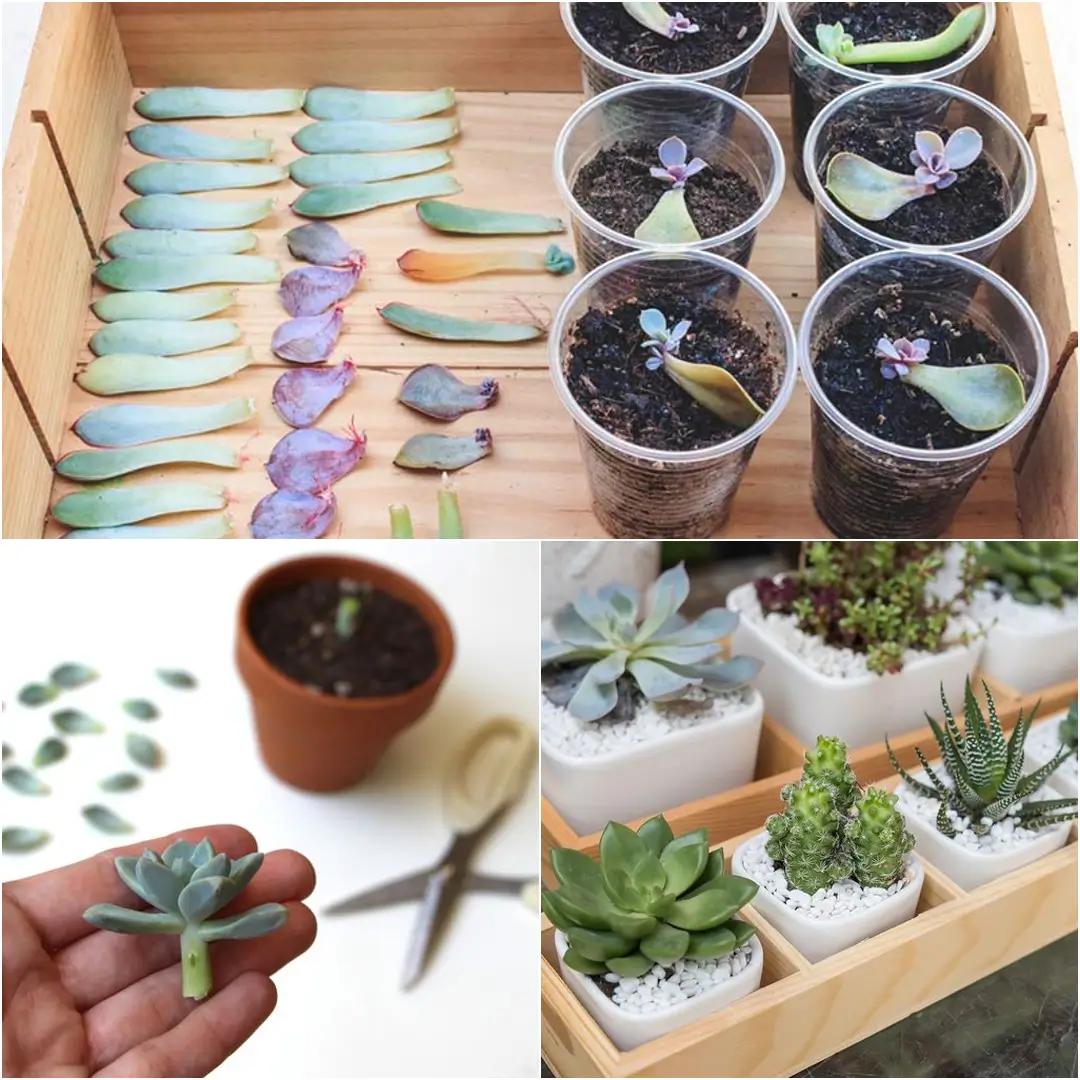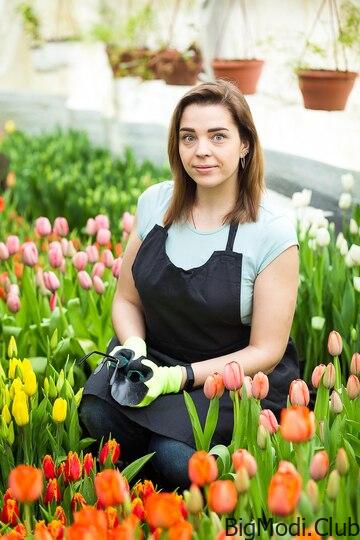Plant succulents has become the go-to method for gardeners who crave low-maintenance greenery that still delivers stunning aesthetics. Whether you’re planting them in garden soil or containers, these fleshy-leaved wonders will thrive if you give them the right conditions. Let’s dive into how to ensure your succulents flourish in both environments.
What Are Succulents?
Succulents are plants that store water in their thick, fleshy leaves or stems, which allows them to survive in arid conditions. From the popular aloe vera to the striking agave, these resilient plants are perfect for gardeners of all skill levels. But what’s the secret to keeping them happy and healthy? It all comes down to how you plant succulents and care for them.
Why Plant Succulents?
Why are succulents such a fan favorite? Besides their unique, eye-catching looks, succulents are incredibly easy to care for. Their water-retentive leaves make them drought-tolerant, which is ideal if you’re someone who forgets to water or lives in a dry climate. When you plant succulents, you’ll find they’re also versatile—you can grow them indoors, outdoors, or even in containers. Plus, they come in an array of colors and textures, adding visual interest to any space.
How to Plant Succulents in Garden Soil
Succulents can absolutely thrive in garden soil, but there’s a catch: not all soil types are suitable. The key to successful succulent gardening lies in creating the right environment. Let’s walk through how to plant succulents in your garden soil.
1. Improve Drainage by Adding Horticultural Grit
Succulents despise soggy soil. In fact, too much water is a surefire way to rot their roots. To avoid this disaster, it’s crucial to improve your garden soil’s drainage. Start by adding horticultural grit, also known as coarse sand or small pebbles, to the soil mix. This simple step helps water move through the soil quickly, mimicking the natural arid conditions succulents love.
2. Don’t Plant Too Deeply
It’s tempting to dig a deep hole for your succulent, but resist the urge! Succulents should sit right at soil level or even a little above it. Why? If those fleshy leaves touch wet soil, they can rot in no time. Shallow planting also allows the roots to spread out, making it easier for the plant to absorb water and nutrients.
How to Plant Succulents in Containers
Container gardening is a brilliant option for succulents, particularly if you have limited space or want to keep them indoors. Here’s how to set up the perfect home for your succulents in pots.
1. Choose Unglazed Terracotta Pots
Unglazed terracotta pots are a succulent’s best friend. These pots allow water to evaporate quickly, keeping the compost dry and preventing root rot. Plus, they warm up faster in the sun, which is another bonus for these sun-loving plants. Make sure the pot has plenty of drainage holes to let excess water escape.
2. Add Grit to the Compost
Just like in garden soil, good drainage is critical when planting succulents in containers. Add some horticultural grit to your compost to ensure excess water drains away quickly. You can use a mix of standard potting compost and grit for the perfect combination.
3. Use Shallow Pots for Small Succulents
Most succulents have fibrous roots, which means they don’t need a deep pot to thrive. Shallow containers are often ideal for these plants, as they allow the roots to spread horizontally, mirroring how they grow in the wild. Shallow pots also help prevent water from collecting at the bottom, which is a common cause of root rot.
4. Opt for Soil-Based Compost for Large Succulents
Larger succulents like agaves need a little extra support. For these, a soil-based compost is essential to anchor their roots properly. A soil-based mix provides more weight and stability, which is especially important for top-heavy plants. These mixes also retain just enough moisture to keep the plant hydrated without causing waterlogging.
Specific Considerations When Planting Succulents
While succulents are generally easygoing, there are a few specific things to consider when you plant succulents, especially when handling and positioning them correctly for optimal growth.
Handling Spiked Plants Like Agaves
Some succulents, like agaves, come with a little danger: sharp, spiky leaves that can cause injury if you’re not careful. When planting these types of succulents, always wear gloves to protect your hands from getting pricked or scratched.
Watering Succulents: Less Is More
Watering succulents can feel a bit counterintuitive, especially if you’re used to more traditional plants. Succulents thrive on neglect when it comes to water.
1. Water Sparingly from Spring to Autumn
Succulents grow the most during the spring and summer, so you’ll need to water them occasionally during these seasons. However, “occasionally” means once every two weeks at most, depending on your climate. If the soil feels dry, give them a drink, but don’t overdo it. Succulents are used to surviving in dry, desert-like conditions, so overwatering can quickly lead to disaster.
2. Avoid Watering in Autumn and Winter
Succulents go dormant during the colder months, so they won’t need much—if any—water. Cut back your watering schedule drastically during autumn and winter, as excess moisture can cause the roots to rot. Keep the soil dry, and you’ll help your succulents make it through the winter intact.
Best Location and Environment for Succulents
Your succulents’ happiness depends largely on where you plant succulents. Choosing the right location and environment can make or break your plant’s success.
1. Pick a Sunny Spot
Succulents adore sunlight! In fact, they need at least six hours of sunlight daily to stay happy. Whether they’re indoors or outdoors, place them in a sunny spot to ensure they get enough light to thrive. If you notice your succulents stretching toward the light, it’s a sign they’re not getting enough sun, and you may need to relocate them.
2. Ensure the Soil Is Well-Drained
We’ve mentioned it before, but it’s worth repeating: succulents cannot stand waterlogged soil. Whether you’re planting them in the garden or a container, always ensure the soil drains well. If you’re dealing with heavy, clay soil in your garden, it’s essential to amend it with plenty of grit or plant your succulents in raised beds or mounds to improve drainage.
3. Choose Slightly Acidic Soil
Succulents are adaptable, but they prefer slightly acidic soil. Aim for a pH between 5.5 and 6.5. If your garden soil is too alkaline, consider adding some organic matter, like compost, to bring the pH level down.
Planting Succulents in Containers: Ideal for Wet Areas
In areas where the ground tends to stay wet for long periods, choosing to plant succulents directly in the garden may not be the best idea. Containers are an excellent solution to avoid waterlogging and keep your succulents dry during rainy seasons.
Move Containers Indoors or Undercover in Winter
One of the biggest advantages of planting succulents in containers is flexibility. When winter rolls around, and the rain starts pouring, you can simply move your succulent containers indoors or undercover. This helps protect your plants from excess moisture and cold temperatures, both of which can be deadly to succulents.
Plant succulents can be a fun and rewarding experience, especially when you follow the right steps to keep them healthy. Whether you’re growing them in garden soil or containers, the key is to provide well-drained soil, ample sunlight, and careful watering. Remember, succulents thrive on neglect, so resist the urge to overwater or fuss over them too much. With the proper care and attention, your succulents will flourish and add a touch of desert magic to your garden or home.
FAQs
How do you properly plant succulents?
To plant succulents properly, start by selecting well-draining soil or a cactus mix. If planting in the garden, improve the drainage by adding grit or coarse sand. For containers, choose pots with drainage holes and use a well-draining potting mix. When placing the succulent, make sure it sits at or just above soil level to avoid rot. Water the plant sparingly after planting and give it plenty of sunlight.
Can you plant succulents directly into soil?
Yes, you can plant succulents directly into soil, but make sure it’s the right kind. Succulents need well-draining soil to thrive. If your garden soil is heavy, like clay, you’ll need to amend it with grit or coarse sand to improve drainage. Succulents don’t tolerate waterlogged soil, so proper soil conditions are crucial for their survival.
Do you plant succulents in soil or sand?
While succulents need good drainage, they don’t grow well in pure sand. Instead, use a combination of soil and sand (or grit) to create the perfect mix. A well-draining succulent or cactus potting mix usually contains sand, perlite, or pumice. This helps prevent water retention, which could lead to root rot. You can mix regular potting soil with coarse sand or horticultural grit for outdoor planting.
How do you grow succulents for beginners?
Growing succulents for beginners is easy! Start by picking a well-draining soil mix or amending garden soil with grit. When you plant succulents, choose a sunny location, either indoors or outdoors, and make sure the succulent has access to at least 6 hours of sunlight. Water sparingly, letting the soil dry out completely between waterings. Use containers with drainage holes for indoor succulents, and be sure to avoid overwatering. These plants are drought-tolerant, so less is more when it comes to care.


